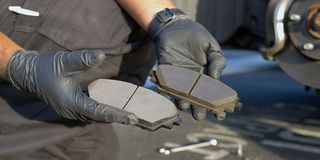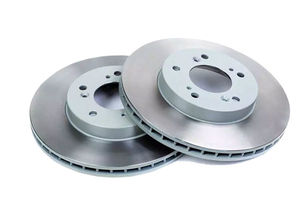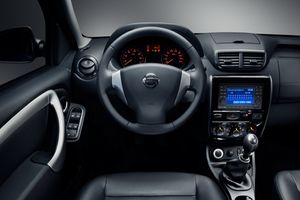
Most mechanics and garages advise motorists to service their cars every 5,000km from the recommended mileage. This, however, varies from one car brand to another and the type of lubricants, especially engine oil used. For example, when it comes to the brake system, brake pads play a critical role in controlling your car.
For instance, since 2021, James Wagaba has been driving upcountry every month. This does not only mean that he visits the garage more often but he also covers 5,000km in a short time.
“I used to service my car every four months but I have reduced to two. On top of other key serviceable parts and lubricants, I replace the brake pads earlier than any other parts. For a while, I did not understand why I was spending more on brake pads compared to other parts,” Wagaba says.
What to know
Alvin Nkini, a mechanic, says several factors explain why you have to replace your brakes earlier than expected. Whereas vehicle manufacturers have not maintained the same cars over the years, the brand of brake pads on the market and a change in service routines are primarily responsible for the fast wear and tear of brake pads.
“If you can maintain the same cars, brand of brake pads and the same service routine, you will notice the difference in brake pads wear and tear. If you change one of these three, there will be a change in the rate of wear and tear. If it is a heavier car and the brand of the brakes you are using is not of good quality, there will be increased wear and tear since braking is friction that causes a lot of wear and tear. If the car is heavy and the brand of brake pads is not as good as those you had before, you will have to replace them more frequently,” Nkini explains.
Driving schedules
If you drive to work during rush hours (morning and evening), your car will not consume a lot of brakes because you are moving slowly and there is not a lot of friction to stop the car compared to a motorist who slows down from a faster speed. The same thing applies to highways. If you drive more on highways and you slow down constantly, there will be a high rate of brake wear compared to someone who drives in urban areas.
The other reason is a sudden schedule change. For example, if you are driving to work and an urgent call comes in and you are asked to take your children to school. From driving at your own pace, your routine changes but you still want to use the same amount of time to achieve both tasks.
“This means your driving habits will slightly be aggressive because you are in a rush. It also means there will be fast driving and hard braking, which comes with fast brake wear and tear. It is not easy to pinpoint one causative factor of increased wear and tear of brake pads if you have not maintained the type of car you are driving, the brand of brake pads and driving routines. It is a combination of factors,” Nkini says.
Road condition
In some cases, road conditions sometimes determine how often you take your car to the garage. For example, frequent braking because of potholed roads compared to roads without potholes means there is a likelihood of you visiting the garage soon, to, among other parts, replace brake pads. And unlike those driving automatic transmission cars, motorists with manual transmission cars with a clutch suffer more because braking is normally less standardised. But when you are clutching, downshifting and accelerating, in most cases, it is not done uniformly, even for those who claim to be good manual car drivers.
Errors are many if you are driving a manual transmission car because the rate of brake pads and clutch wear and tear is higher. That is why you smell some cars burn the clutch in traffic jam, with the main cause being failure to balance it well.
Alignment and balance
Sula Kilimani, a mechanic, says the side of the car that is leaning, especially that whose tyre pressure is low, will bear more weight. This means braking on the affected side will be harder.
“The side with tyres of low pressure will experience faster brake wear and tear. If you load your car and you do not balance the weight, brake application in each wheel will be uneven and this will lead to fast brake wear and tear yet all brakes have to be replaced at the same time,” Kilimani explains.
Brake discs
It is hard, if not impossible to determine how the quality of brake discs impacts brake wear and tear. This is because brake discs are parts that are not changed often. When it comes to brake discs, it is more about their mechanical or functional state. Brake discs are the parts of the brake system onto which brake pads touch when you step on the brake pedal to control the speed of the car.
If your brake discs are rough and not smooth, they will cause faster wear and tear since they will eat up the brake pads. If brake discs are rough, they have to be schemed or resurfaced to make them smooth. If you have parked a car for long, because they are metallic, brake discs attract water and will rust. The rust will create an uneven rough surface such as sandpaper which quickly grinds brake pads when you eventually drive the car.
Generally, the technology used to manufacture brake pads has been focused on reducing and minimising dust and heat in terms of materials used, with little information known about the chemicals used. Therefore, when buying brake pads, it goes back to where you buy them from, how much you trust the dealer and how honest they are.
Note
Less experienced drivers might drive too fast and brake too hard. They may use the car more in heavy traffic. If they borrow the car for trips or recreational activities, then they may load it up with heavy stuff that puts additional strain on your pads. Just one additional driver could wear down your pads more quickly.








